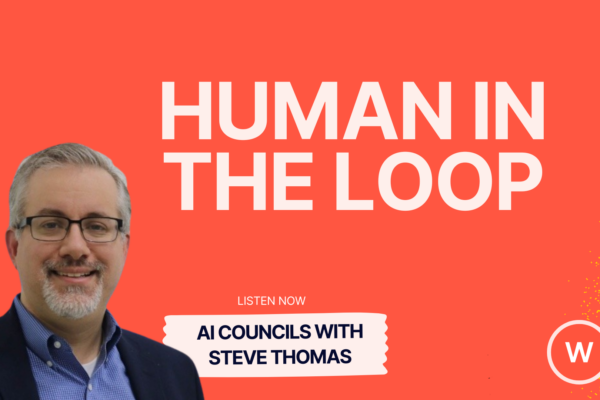Have you ever noticed how some teams are motivated, productive, and enthusiastic, while others seem disengaged and indifferent? The secret often lies in employee experience. Engaged employees feel a deep connection to their work, which leads to higher productivity, better morale, and lower turnover rates.
For HR teams and managers, this can lead to frustrating challenges—skyrocketing turnover rates, dwindling productivity, and the constant effort of trying to re-engage employees who seem disconnected from their work.
The good news? You have the power to change this. By focusing on proven strategies to boost employee engagement, you can foster a culture where employees feel valued, motivated, and aligned with your organization’s goals. Let’s dive into how you can make it happen
What is Employee Engagement?
At its core, employee experience is the emotional connection employees have with their work, team, and company. It’s the level of enthusiasm and dedication employees feel toward their jobs. Highly engaged employees are more productive, more likely to stay with the company, and often act as ambassadors for the brand.
Why Does Employee Engagement Matter?
Employee engagement is no longer just a nice-to-have; it’s a critical factor in the success of any business. Here are some eye-opening statistics that show how much it matters:
- Organizations with high engagement levels experience 22% higher profitability than those with low engagement levels. (Gallup)
- Companies with engaged employees see 21% higher productivity. (Gallup)
- Disengaged employees cost businesses between $450 billion and $550 billion annually in lost productivity. (Gallup)
- 65% of employees say they would work harder if they were better recognized. (Bonusly)
The Role of Leadership in Employee Experience
Leadership is the cornerstone of employee experience. Leaders have the power to inspire, motivate, and guide their teams toward achieving common goals. The way leaders communicate, provide feedback and recognize efforts can significantly influence engagement levels.
How Leadership Drives Employee Engagement
Clear Vision and Purpose: Leaders who clearly communicate the company’s vision and purpose help employees feel that their work matters. A study from Gallup found that only 41% of employees believe they know what their company’s goals are, which directly impacts their level of engagement.
Building Trust: Employees who trust their leaders are more likely to be engaged. Open communication and consistency are key. According to Edelman’s Trust Barometer, 81% of employees say they trust their leaders when they are open and transparent.
Supportive Environment: Leaders who support their employees’ growth and well-being create a positive atmosphere that fosters engagement. Research shows that 85% of employees take more initiative when they receive feedback in the workplace
Leadership Styles That Improve Employee Experience

Not all leadership styles foster engagement. Here are a few that have been proven effective:
- Transformational Leadership: Inspires and motivates employees through a shared vision and recognition. Employees with transformational leaders report higher engagement levels.
- Servant Leadership: Focuses on supporting and empowering employees, creating a culture of trust and collaboration.
- Coaching Leadership: Leaders who act as coaches, providing regular feedback and guidance, help employees grow and remain engaged.
Building a Positive Work Culture
Work culture is the environment in which employees operate. It includes the shared values, beliefs, and practices that shape how work is done. A positive work culture contributes to higher employee engagement by making employees feel connected to the company and its mission.
How to Build a Culture That Fosters Employee Engagement
Promote Transparency: Open communication helps employees feel informed and part of the decision-making process.
Encourage Collaboration: Foster an environment where employees feel comfortable sharing ideas and working together.
Value Diversity: A diverse workplace is more inclusive and engaging, helping employees feel respected and valued.
Support Employee Well-being: Encourage work-life balance, mental health initiatives, and a healthy work environment. For example, Uber is Known for its transparent communication and employee-focused initiatives. It was awarded the Best Company for happiest employees this year.
Communication and Feedback Channels

Effective communication is one of the most crucial factors in improving employee experience. Employees who feel their voices are heard are more likely to stay engaged and productive.
- Regular Check-ins: Managers should regularly check in with employees to understand their concerns and provide feedback.
- Two-way Communication: Employees should feel that they can openly share their ideas, feedback, and concerns without fear of retribution.
- Recognition: Acknowledge employees’ hard work publicly to build morale and reinforce positive behavior.
Tools for Enhancing Communication
- HR Chatbots: Automated systems like HR chatbot can provide quick responses to employee queries, making communication more accessible.
- Employee Engagement Software: These tools track employee satisfaction and provide real-time feedback to help HR teams address issues proactively.
- Internal Communication Platforms: Platforms like Slack or Microsoft Teams allow for instant messaging, team discussions, and idea sharing.
Efficiently Respond to Employees On Slack, Teams & Gmail With Winslow
Recognizing and Rewarding Employees

Why Recognition Matters
Recognition is a powerful tool for boosting employee engagement. When employees feel their hard work is appreciated, they’re more likely to stay motivated and engaged.
Types of Employee Recognition
- Verbal Praise: A simple “thank you” or acknowledgment during a meeting can go a long way in making employees feel valued.
- Monetary Rewards: Bonuses, raises, or gift cards are tangible ways to reward employees for their contributions.
- Public Recognition: Recognizing employees’ achievements in front of their peers boosts morale and fosters healthy competition.
Building a Recognition Program
- Peer-to-Peer Recognition: Encourage employees to recognize each other’s contributions, fostering a culture of appreciation.
- Spot Awards: Offer immediate rewards for accomplishments, showing that hard work is noticed.
- Employee of the Month: Recognizing top performers monthly ensures consistent recognition across the team.
Running Low on Bandwidth?
Reduce Employee Questions up to 50% with Winslow
Providing Growth and Development Opportunities
Employees are more likely to stay engaged when they see opportunities for career advancement. Career development is essential for retention and engagement, as employees who feel they are growing professionally are more likely to stay with the company.
Career Growth Strategies to Improve Engagement
- Offer Training Programs: Provide employees with the tools they need to succeed and grow in their careers. This could include online courses, workshops, or mentorship programs.
- Promote from Within: When employees know there’s potential for growth, they’re more motivated to stay engaged. According to a LinkedIn study, 94% of employees say they would stay at a company longer if it invested in their career development.
- Cross-Department Exposure: Allow employees to gain experience in different roles within the company to broaden their skills and perspectives.
The Link Between Work-Life Balance and Employee Experience
Employees who can maintain a healthy balance between their work and personal lives are more likely to be engaged. Overworked employees are more prone to burnout, which can lead to disengagement.
How to Support Work-Life Balance
- Flexible Hours: Allow employees to adjust their schedules to accommodate personal needs.
- Remote Work Options: Let employees work from home when possible to reduce stress and improve engagement.
- Encourage Time Off: Promote the use of vacation days and time off to help employees recharge.
Leveraging Technology for Employee Engagement
Technology plays a pivotal role in boosting employee engagement. From employee engagement software to HR chatbots, there are numerous tools available to help businesses foster a more engaged workforce.
How to Use Technology Effectively
- Real-Time Feedback and Comms Tools: Tools like Winslow allow employees to communicate faster with HR, get answers in real-time so HR teams can address issues before they escalate.
- Survey Tools: Use regular surveys to gauge employee satisfaction and engagement levels.
- Gamification: Gamifying tasks and achievements can increase motivation and engagement, making work more enjoyable. Companies that use gamification report higher engagement levels.
Creating a Social and Inclusive Workplace

The social aspect of work plays a big role in employee experience. Employees who feel connected to their colleagues and company are more likely to stay engaged and motivated.
How to Foster Social Connections
- Team-Building Activities: Plan regular team-building events or activities to encourage bonding and collaboration.
- Diversity and Inclusion: An inclusive environment where employees feel welcomed regardless of their background promotes higher engagement.
Conclusion
Employee experience goes far beyond abstract concepts or subjective measures of employee well-being. It has a concrete, measurable impact on an organization’s success and should be treated as a core component of any effective business strategy.
Research highlights the tangible benefits of prioritizing employee experience. Gallup’s studies reveal that teams with exceptional employee experiences achieve 21% higher profitability compared to those lagging behind. Additionally, companies with highly engaged employees see a 17% boost in productivity.
Investing in employee experience isn’t just about improving workplace culture—it’s a strategic move that drives measurable business outcomes.
Boost Employee Engagement by Giving them HR Answers 24x7 with Winslow
Employees want quick answers and to be heard. With Winslow, automate communication wherever your team or company needs responses, enhancing engagement and efficiency.




